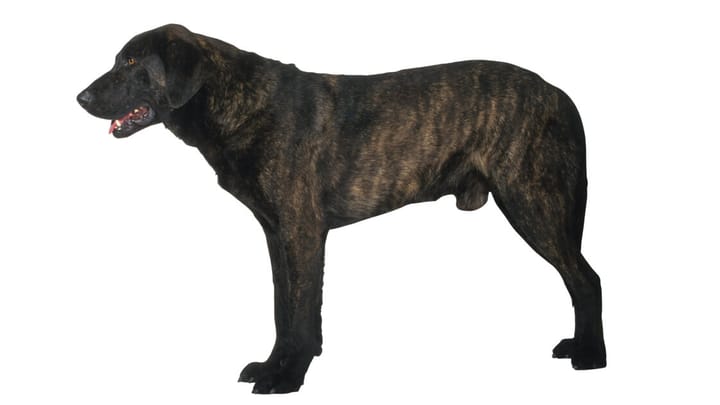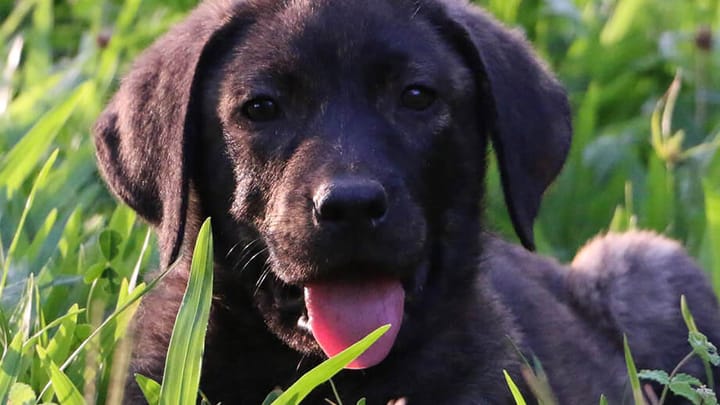Castro Laboreiro Dog
Other names : Cao de Castro Laboreiro, Dog of Castro Laboreiro, Portuguese Bouvier, Portuguese Cattle Dog


The Portuguese Cattle Dog is one of the rarest breeds in the world, with currently only between 200-500 canines documented. At times, this breed is called a herding dog, however this isn’t his first job. The Portuguese Cattle dog is more of a livestock guarding dog. In this role, he is fearless, intelligent and protects any herd or flock he is given to guard, no matter during the day or at night.
|
Life expectancy |
The Castro Laboreiro Dog has a life expectancy of between 12 and 14 years |
|
Size |
Large
|
|
Adult size |
Female
Between 22 and 24 in
Male
Between 23 and 25 in
|
|
Adult weight |
Female
Between 55 and 77 lb
Male
Between 66 and 88 lb
|
|
Coat colour
Black, Grey, Brown/Dark red, any of which can be brindled. |
Blue |
|
Type of coat
The Portuguese Cattle dog has a short thick coat that is smooth but coarse when touched. |
Short |
|
Eye colour
Varying shades of brown and hazel to black. |
Brown
|
|
Purchase price |
The Castro Laboreiro Dog costs between £400 and £800 |
The Portuguese Cattle dog is still a working breed in Europe, especially in the Azores region. In recent years, the breed almost disappeared, due to modern agricultural farming methods having been introduced. Additionally, many individuals were killed off by farmers accidentally poisoning them instead of the wolves they were targeting. Today, the Portuguese Cattle dog is sometimes employed in the military forces and also as a home companion.
More details about the Castro Laboreiro Dog
Castro Laboreiro Dog: Origins and history
There is very little information concerning the history of this breed. It’s thought that the first representative of the breed was born in the late 1800’s, although there is no historical data to back this up.
Physical characteristics of the Castro Laboreiro Dog
This hardy breed of canine has a noble and pleasant appearance. The Portuguese Cattle dog is a mastiff type, with a short loin, a deep, oval shaped chest and a strongly built body. His hind legs and forelegs are very muscular and strong. He has a rectangular-shaped head and a long muzzle. The dog’s eyes have a very serious expression which makes him look rather fearsome and unfriendly.
Castro Laboreiro Dog: Characteristics
Castro Laboreiro Dog: Behaviour
Training a Castro Laboreiro Dog
Initially, as this breed is quite independent when working, they can also be quite difficult to control and train. Respectful, firm training routines are needed.
Castro Laboreiro Dog: Lifestyle
Breed compatibility Castro Laboreiro Dog
Castro Laboreiro Dog: Purchase price
The initial purchase price to buy a Portuguese Cattle Dog puppy is between £400 and £800. The monthly budget will be around £100.
Castro Laboreiro Dog: Grooming
The coat of the Portuguese Cattle Dog needs little care, other than an occasional brushing and bathing.
Castro Laboreiro Dog: Health
There are really no documented, recognised health issues with this breed, however hip and elbow dysplasia may be diagnosed. The average life expectancy is 12 years.
Certainly a very strong dog, with few health issues.
This breed is used to being outside and working in all weathers. This dog won’t have a problem during spells of warmer weather.
The Portuguese Cattle dog is bred to work outdoors. He is fully equipped with a dense, thick coat to withstand cooler weather.
As a large and active dog, providing he meets his enormous daily exercise quota, he won’t gain weight easily.
- Hip dysplasia
- Elbow dysplasia
- Bloat/Gastric torsion
- Entropion
- Ectropion
- Cataracts
- Corneal dystrophy
- Progressive Retinal Atrophy/PRA
- Brachycephalic syndrome
- Shortness of breath
- Heat intolerance
- Skeletal growth abnormalities
- Arthritis
- Demodicosis/Demodex mange/Demodectic mange


